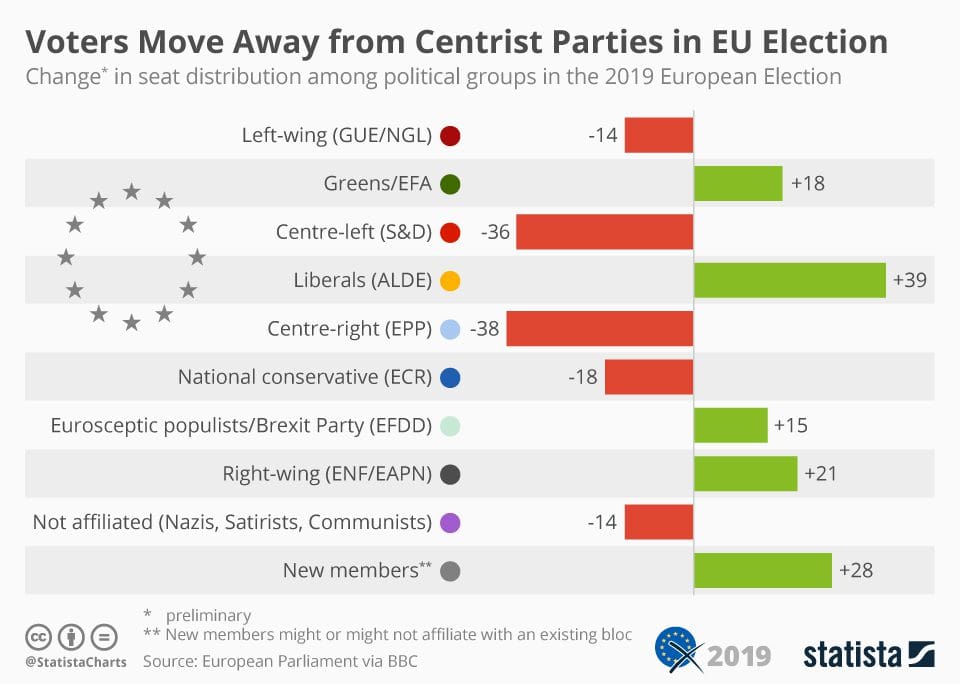Europe: The recent general election in the Netherlands delivered a stunning political reversal(Europe). The centrist Democrats 66 (D66) party surged to a tie for first place. Furthermore, the party’s leader, Rob Jetten, now stands poised to become the next Prime Minister. Conversely, the hard-right, anti-immigration party of Geert Wilders (PVV) suffered significant losses. This outcome has sent a wave of relief across continental Europe. It raises a profound question: Does this Dutch turnaround signal a turning point? Is the populist wave that has destabilized European politics finally cresting and receding? The analysis suggests the result is a potent symbol of resilience. However, it is not a definitive death knell for the far right.
The Dutch Reversal: A Victory for Pragmatism and Stability Europe
The election result was a highly symbolic defeat for populist chaos. The vote has made necessary by the collapse of the previous far-right-backed coalition. This failure have widely blamed on Wilders himself.
The Punishment for Instability
Geert Wilders’s PVV lost a quarter of its seats. This happened just two years after its record-breaking performance. This decline has primarily interpreted as a punishment for instability. Wilders’s uncompromising demands on immigration brought down his own government. Dutch voters ultimately chose stable governance over radical ideology. They expressed a clear desire for pragmatism. They wanted a government capable of solving immediate national crises. These crises include the severe housing shortage and the cost of living. The inability of the far right to transition from protest to competent governance proved to be its greatest weakness.
The Centrist Surge
The rise of D66 provided the perfect counter-narrative. Rob Jetten campaigned on a platform of optimism, pro-European cooperation, and social liberalism. His message successfully mobilized younger, educated, and urban voters. The centrist parties demonstrated that they can win decisively. They can win by offering a clear, positive vision of the future. This contrasts with the far right’s focus on cultural grievances and negativity. The result is a major boost for the European center. It proves that mobilizing a unified, progressive front can effectively neutralize the populist surge.
The European Barometer: A Mixed Signal Europe
The Netherlands has historically been a political testing ground. The nation’s verdict often provides clues about wider European trends.
A Boost for the Mainstream
The D66 victory provides a welcome blueprint for mainstream parties elsewhere. It offers hope to centrists in France, Germany, and Spain. It shows that populism is not an invincible, inexorable force. The result suggests that voters may be tiring of constant political conflict. They are returning to established parties that promise competence. Furthermore, the explicit pro-European stance of the winning parties affirms the EU project. It refutes the isolationist rhetoric of the far right. Therefore, the result is a powerful piece of evidence. It has used to argue against the inevitability of the populist takeover.
Fragmentation, Not Annihilation
However, the losses for the far right were not absolute. The PVV’s decline has offset by gains for other smaller, hard-right parties. The vote has merely fragmented. It has not eliminated. This phenomenon has observed elsewhere in Europe. It confirms that the core concerns driving far-right support still exist. These concerns involve immigration, identity, and economic insecurity. The electoral base for anti-establishment, anti-immigrant politics remains intact. It is simply shifting its loyalty among different banners. Consequently, the overall share of the right-wing vote did not drastically change.

The Structural Barriers to the Far Right’s Demise
The enduring appeal of the European far right has rooted in structural, economic realities. These realities have not easily solved by a single election result.
The Housing and Cost-of-Living Crisis
The most significant driver of frustration is economic. The Netherlands and many other EU states face severe housing crises. Affordable homes are scarce. The cost of living continues to skyrocket. The far right skillfully capitalizes on these issues. They offer simple, often scapegoating solutions. They blame immigration and globalization. Unless the new centrist government can deliver rapid, tangible improvements to housing and household finances, voter frustration will return. It will return to fuel the populist backlash in the next election cycle.
Immigration and Identity Politics
Immigration remains a complex, potent issue. The far right’s appeal is fundamentally based on identity politics and cultural protectionism. This ideology offers a clear explanation. It blames economic and social challenges on external factors. This narrative is powerful and highly resistant to facts. The centrist government must develop a credible, compassionate, and functional migration policy. This policy must satisfy the demands of the electorate. It must avoid simply handing the issue back to the far right. The failure to address these deeply felt cultural anxieties guarantees the continued endurance of populist forces.
The Long Game of Political Resilience Europe
Does the rise of Dutch centrism spell doom for Europe’s far right? The answer is a hopeful, yet cautious, no. The election was a powerful, necessary victory for stability and pragmatism. It showed that populist parties face consequences. They have punished for self-inflicted chaos. This provides a much-needed boost for the European mainstream. However, the ideological fight is far from over. The core issues that feed the far right—housing, immigration, and economic insecurity—still persist. The new centrist coalition must govern effectively. It must deliver tangible solutions on these structural problems. If it fails, the far right will surely regroup. It will be ready to seize power in the next round of elections. The political resilience of the center is now on trial. Its success will ultimately determine the direction of the European project. Europe
Read More Articles Click Here. Read Previous Article Click Here.

